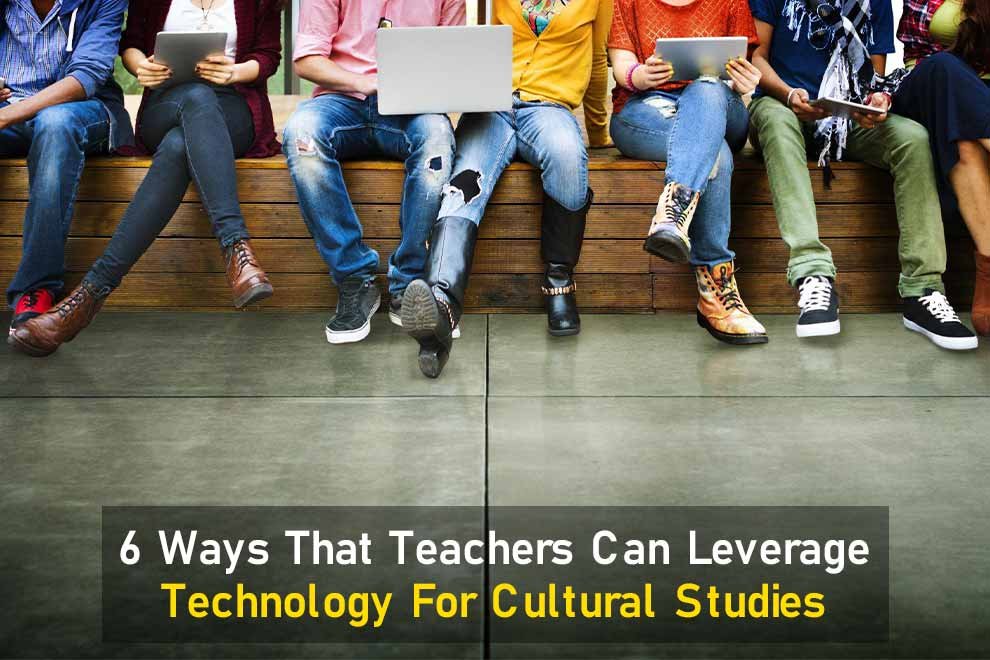The children of today are living in a globalised society, so it’s important for our schools and educators to integrate cultural enrichment activities into their school curriculums, and perhaps even into their school’s events calendar.
Yes, our educators and educational institutions play a huge role in creating responsible global citizens. But thankfully, this modern responsibility does come accompanied with some modern help. Thanks to technology, students now have access to a wide variety of tools to help with cultural learning.
So how can teachers utilise technology to support cultural studies? We’ll be answering this question today, namely by providing six easy ways that teachers can leverage technology for cultural appreciation and exploration in the classroom.
1. Host Cultural Events at your School
The best way to get kids involved and immersed in their own learning journey is to schedule interactive educational experiences. That’s why our first pro tip is to include cultural events in your school calendar. Giving children the opportunity to not only participate in but perhaps even host cultural events will naturally provide them with a more hands-on experience of that holiday and of the wider culture that commemorates that holiday.
Kids can use technology to mock up posters and other promotional materials in the lead-up to these cultural events. For instance, kids can use design software to design cards for Raksha Bandhan, creating their own designs that can put a special spin on that beloved Indian holiday. Similarly, kids may be able to print off their designs to make not only cards but posters too, and these posters could then be used to decorate the school and market any upcoming festivities to mark the holiday.
Organising these events can also be regarded as a creative task for students, that positions them to learn more about the ins and outs of that cultural event and how best they can do that event justice. Not to mention that these calendar events will only strengthen the sense of community surrounding your school as well as be a great change of pace from reading textbooks and listening to lectures.
2. Schedule Online Cultural Exchanges for your Students
Back in the day, the only way a student could truly immerse themself in another culture was to travel all the way to another country and live there for a certain amount of time. This is still a valuable experience, but not everyone can do it, for financial or other reasons.
But did you know that these days, it’s possible to do a cultural exchange completely online? There are actually a number of organisations that offer these opportunities. An online exchange allows students to learn about a different culture directly from people who actually live in the country in question. It also allows them to make new friends from all around the world, and to keep in touch with them long after the end of the exchange.
Digital cultural exchanges can be a great way to get kids out of their comfort zones without having their families bear the additional costs associated with traditional student exchange programs. It’s just another method for ensuring that our kids feel enriched and connected to the world in their schoolwork.
3. Explore the Capabilities of Digital Language Learning
It’s no secret that technology has revolutionalised language learning. Back in the day, you needed to find a tutor who speaks the language you’re trying to learn and physically meet up with them.
While this can still be a useful thing to do, language learning is now so much more accessible. There are a number of platforms that allow you to learn languages like Spanish, Chinese or French without leaving your home or classroom. These platforms also offer similar resources that you’d expect with advanced tutoring services, thus making language learning far more accessible and affordable to younger generations.
The internet also allows students to practice speaking the language they’re trying to learn with native speakers, even those who live in another country. Tools like chat platforms specifically for language learners can help students practice speaking in new languages without even having to travel abroad. Imagine being able to hone your fluency in a new language from the comfort of your own bedroom or classroom.
4. Maintain Access to Cultural Resources
One of the great things about technology is that it gives us access to the collective knowledge of humanity. Back then, students were limited by the amount of books their local library contained. Now, it’s possible to access information and resources from all over the world with the click of a button (or a tap on a screen).
In order to take advantage of this capability, your educational institution needs to have a subscription to several online databases. Your local library is a good place to start if it has an online platform. You can also sign up to educational databases the world over, either for free or for a fee, to gain access to their resources.
You can also make your own school directory of valuable online resources for your students to explore. This can be achieved by communicating with other educators in your network for any resources they may recommend, for finding resources like The Education Magazine, or even resources recommended by our own experts here at The Education Magazine, or perhaps even by opening the floor up to students themselves. As digital natives, our students should also have their own assortment of digital learning resources they could share with their peers.
5. Online Courses From Foreign Institutions
These days, you can learn a wide range of skills without even getting up from your computer. Almost anything, from coding to marketing to cooking, can be learned online. If you’re an educator, consider getting an institution-wide subscription to an online learning platform and giving your students the option to pick up extra skills.
The great thing about online learning is that it’s not confined to any particular geographical location. Students can learn skills from institutions anywhere in the world? Want to learn coding from an American university? Easy. Want to pick up some cooking skills from a Parisian culinary school? Done.
6. Take Advantage of Virtual Tours
Field trips have always been a big part of schooling. Now, it’s possible to take your students on a trip they won’t forget without even leaving the classroom. Plenty of cultural institutions like museums offer virtual, guided tours
Of course, there will always be a place for going on a physical field trip. The level of immersion students get from actually visiting a place in the flesh is hard to replicate digitally. However, virtual field trips are a fantastic tool to have in your teaching arsenal, as it allows students to experience places that might otherwise be impossible to travel to.
If you’re an educator looking to create a unique cultural experience for your students, technology is your best friend. Tools like online libraries, language learning apps and digital design platforms allow your students to learn about other cultures in a fun, immersive way.
In this article, we’ve covered some ways technology can help you turn your students into global citizens. Start implementing these into your educational program now to take your students’ cultural education to the next level.










